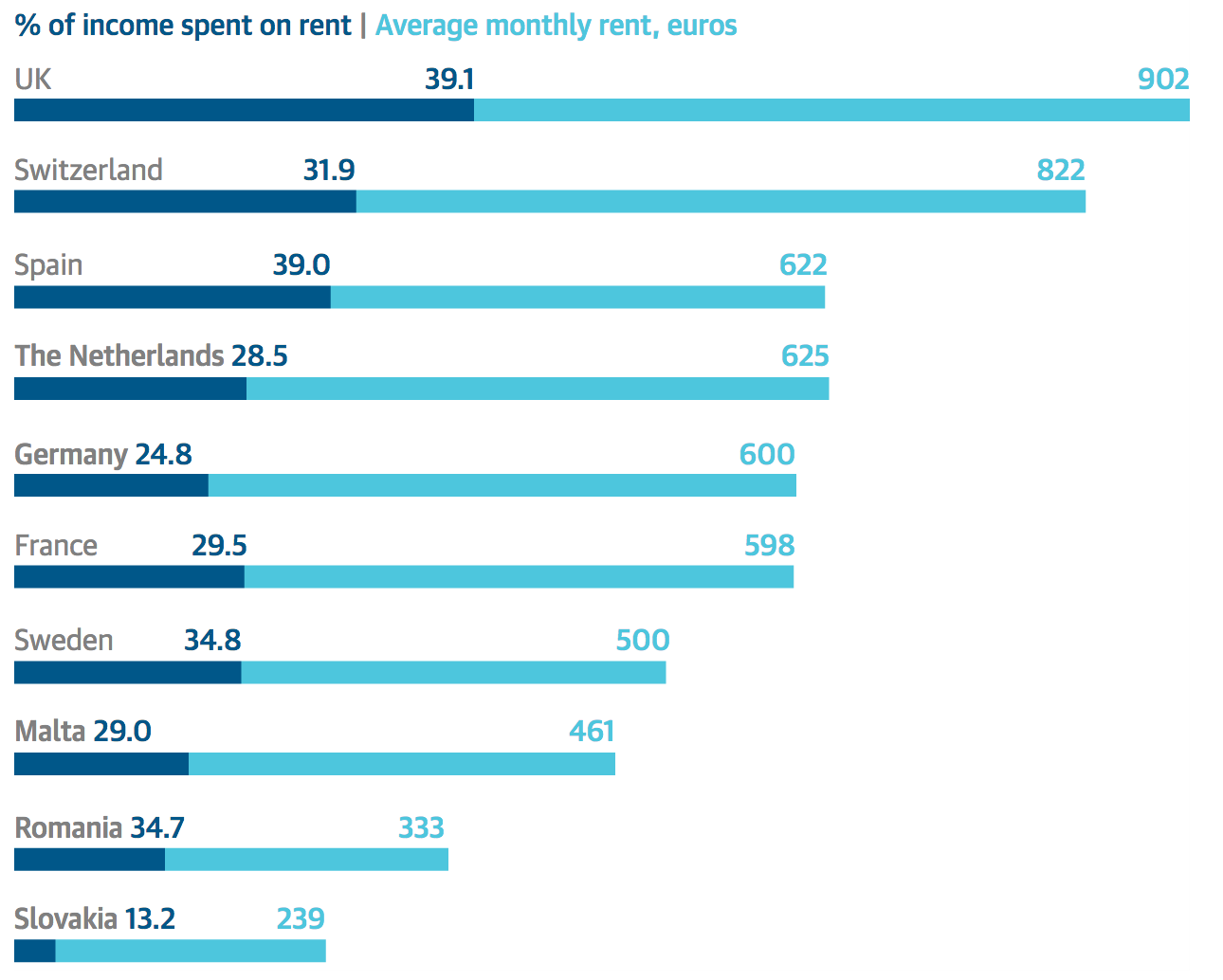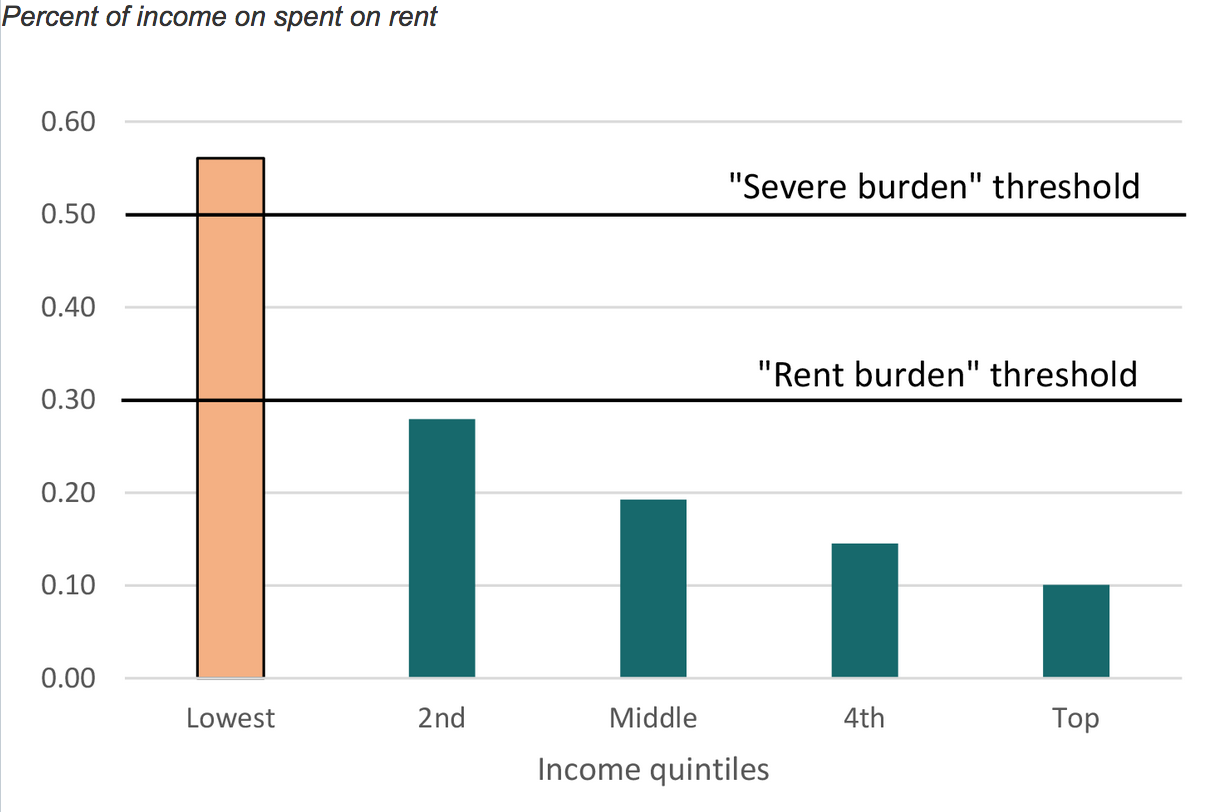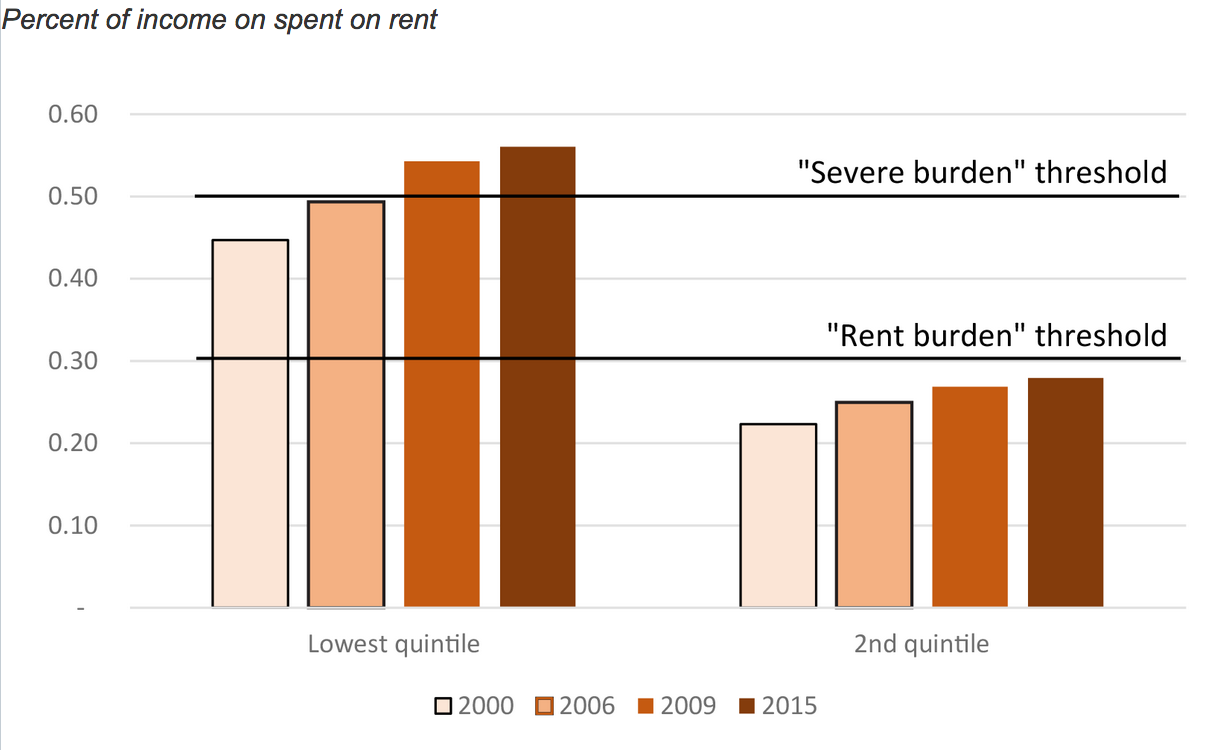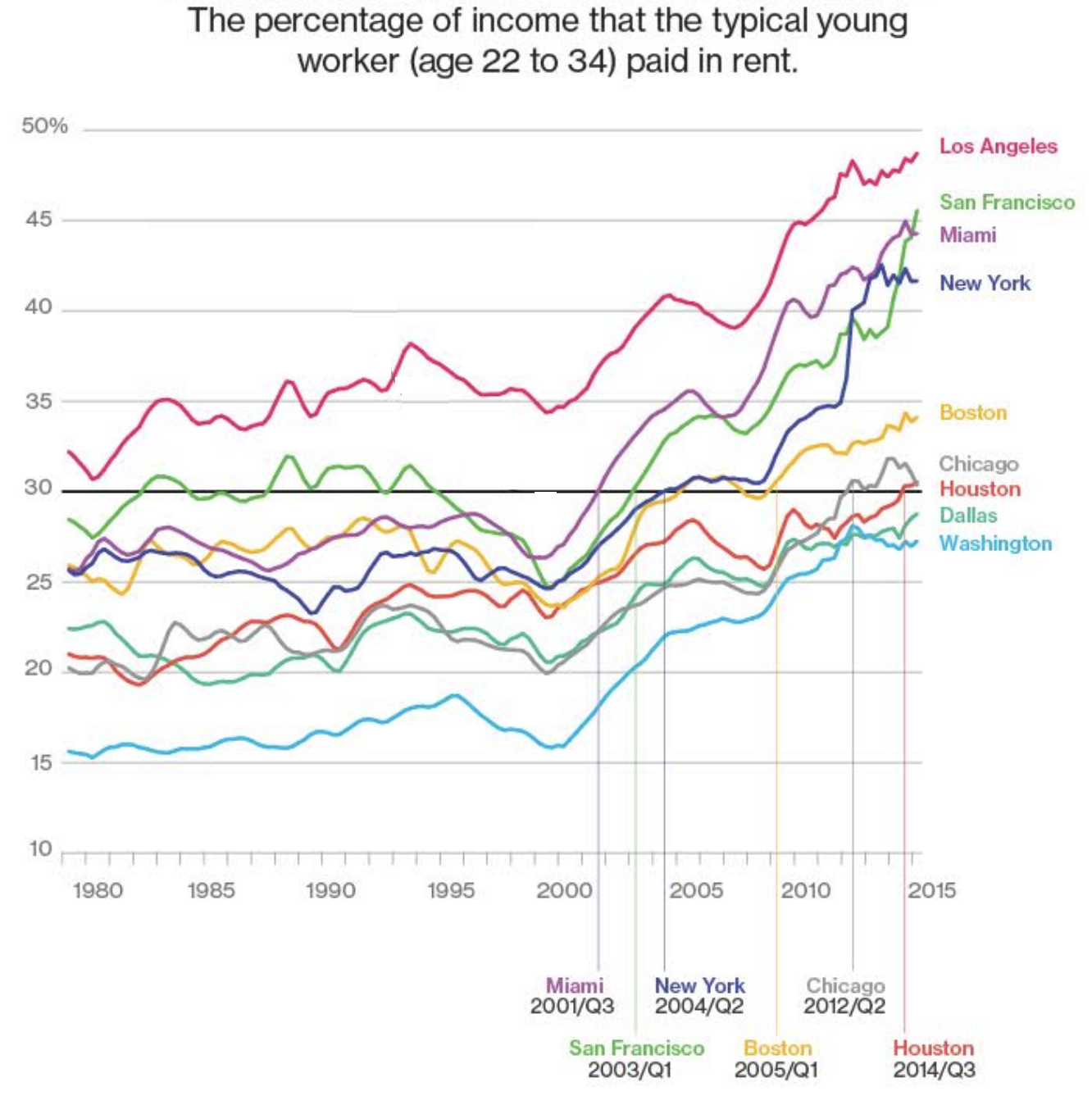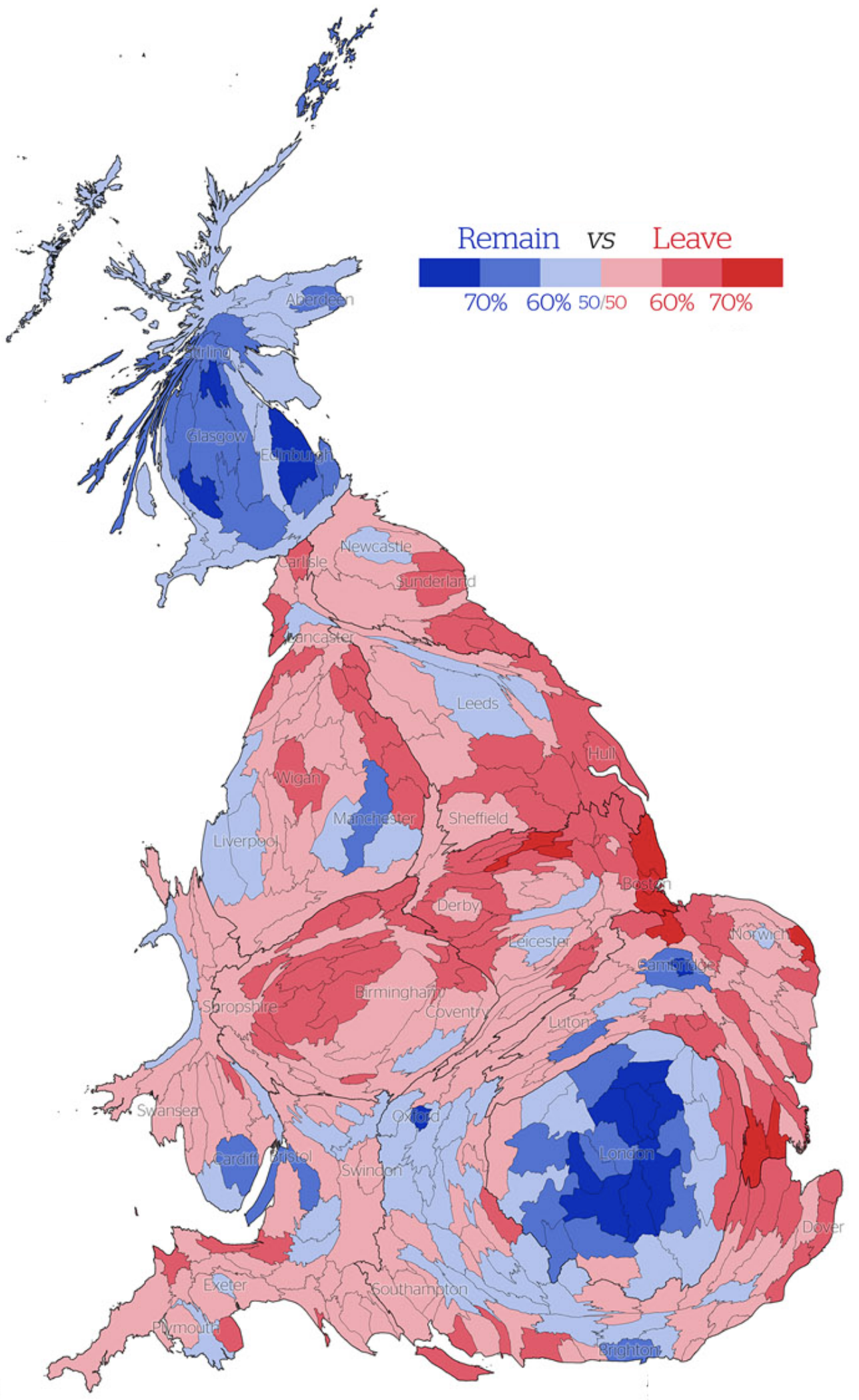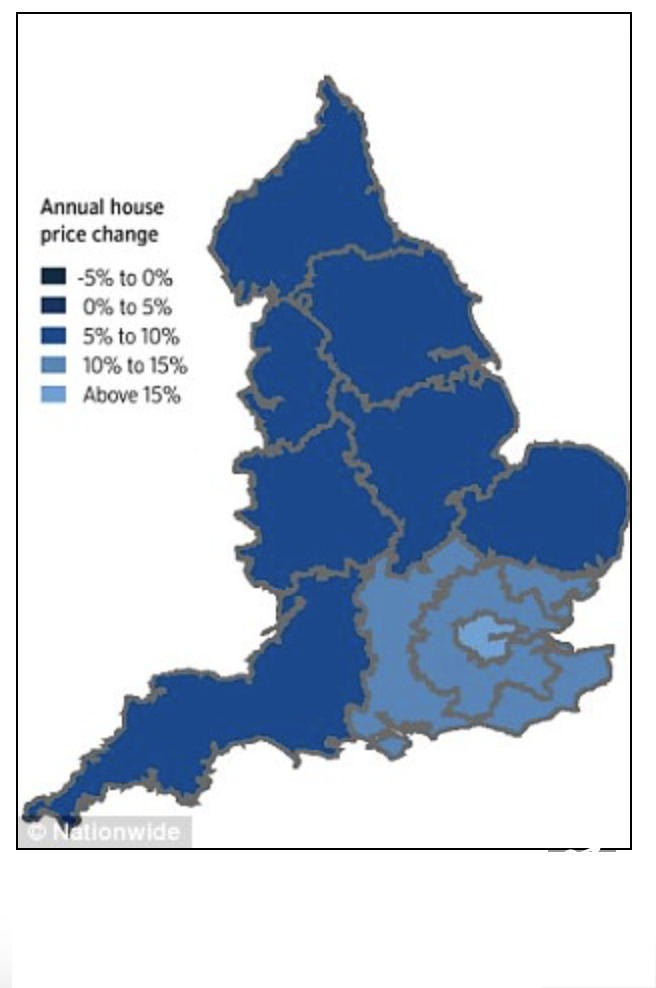Too-easy credit and millions of bad loans made during the U.S. housing bubble paved the way for the financial calamity and Great Recession that followed.
I’m hoping that the Millennial Generation doesn’t set its sights on homeownership as a benchmark of economic stability, because it’s going to be out of reach for so many of them that it will just be a recipe for frustration.
… Zoning regulations and other local barriers to housing development allow a small number of individuals to capture the economic benefits of living in a community, thus limiting diversity and mobility.
The rent is too damn high!
THE CURSE OF RISING REAL ESTATE
A fundamental concern of anybody with a family is to put a roof over their heads. Be it by owning or renting, the first priority of households, before even health and education, is to have a place to stay. For the past several decades in the West this necessity has steadily come to look more like a luxury.
The percentage of rent as a proportion of income has increased significantly in most countries. In large metropolitan areas, the trend is particularly pronounced. Major cities, like London, San Francisco, and Paris are experiencing rents so high that they now represent more than 40% of the average person’s earnings net of tax Statista. This is even occurring in smaller cities. For Dubliners, 55% of their after-tax income goes to rent Irish Time. For almost all the metropolitan areas in the U.S., the percentage of income spent on rent has doubled in the last 30 years, reaching around 40% in California or New York. Zillow.
The alternative to renting is buying. But the price of real estate has also gone up. Historically, median house prices were about three times the median income of households. In many countries that multiple is now close to 10, and in large cities it is often much higher Demographia.
The increase in rent prices is closely related to this explosion in real estate prices. In fact, if you look at it from the perspective of real estate values, rents are actually too cheap by normal standards to justify the high cost to landlords of owning the real estate. Yields from real estate have been trending down, and in many cases they are well below the natural sustainable level at which you should see property prices stabilize MSCI. This means that rental income as a percentage of the price of the property is too low compared to interest rates or alternative investments. It then can only be justified by an expectation that the property value, or the future rent, will increase substantially. But the level of rent is already so high, above any historical comparison available, that, beyond any consideration of the social impact, it has become unrealistic to believe that it could further increase as a percentage of income. In fact, it should come down. At this point, the only way for rent to go up would be if people saw their incomes increase, but, as we have seen, that is not happening.
How did we arrive at this precarious state of affairs?
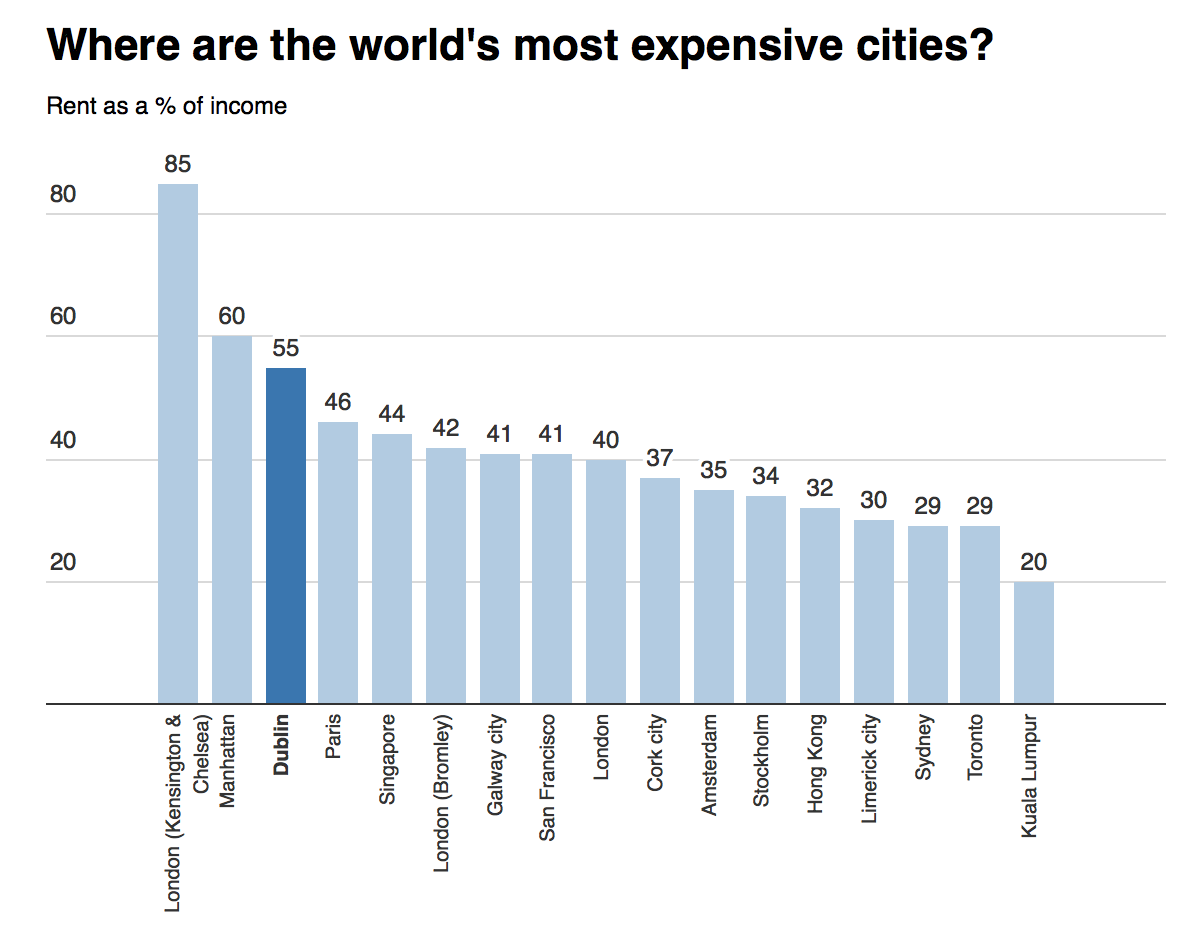
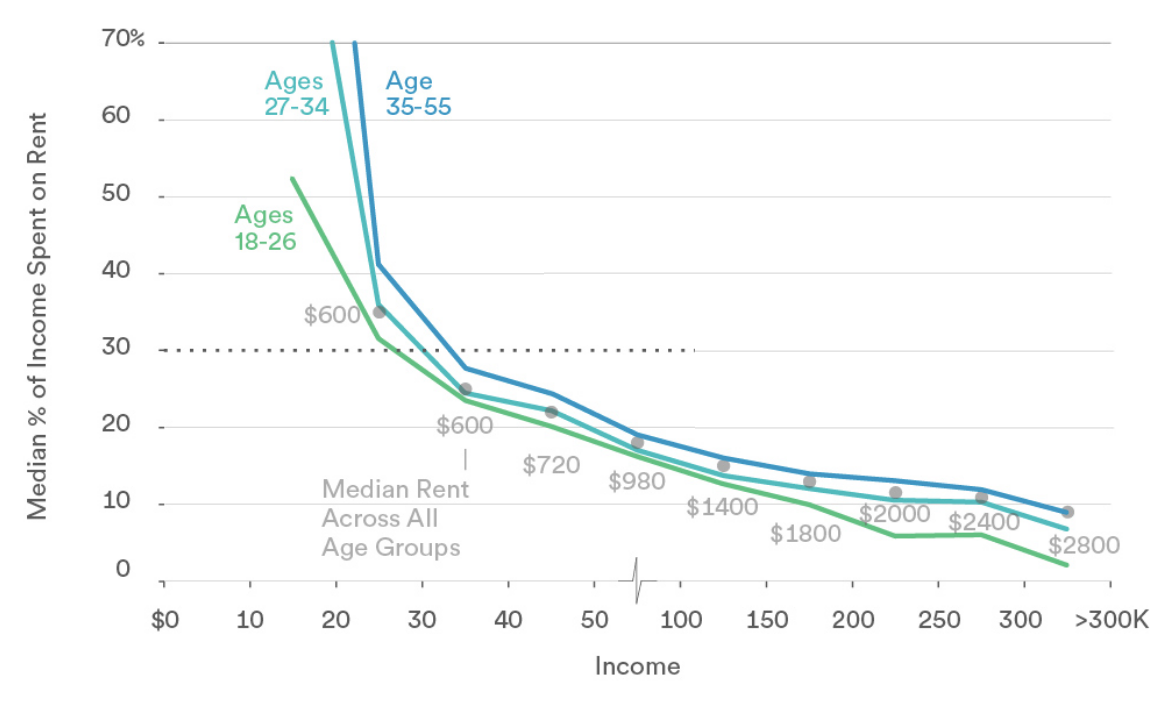
OVER-LENDING
A major culprit is the valuation and financing of real estate. Banks are lending for real estate on the basis of the real estate’s value. They typically lend, according to where we stand in the real estate cycle, between 80% to 100% of the value. This is because real estate is allegedly a “safe” asset. This is by itself extraordinary. First, the historic volatility of real estate prices and the history of economic cycles reveal that real estate is not a safe, but a risky asset. Its physical nature does not guarantee its value. This over-lending to real estate buyers comes at the expense of lending to small business, which necessarily captures a smaller share of lending.
In other words, banks’ lending practices tend to favor passive, if durable, consumption over investments in dynamic production. Where this is not the case, or not as much the case, such as in Germany, a richer industrial tissue can be maintained.
This has not always been the state of affairs. The share of total bank lending devoted to real estate has historically hovered around 30% in the U.K., but that has more than doubled in the last 20 years. Had the banks maintained the same ratio, only half as much money would have been available for real estate lending and prices would not have inflated so dramatically.
I was a researcher in Japan at the end of the Japanese bubble, surely the most extravagant real estate crisis of the last 100 years. At the time the emperor’s palace in Tokyo was presumed to be worth as much as California. This has no basis in fundamental “value,” but the price of Japanese real estate was not about fundamentals. Rather, it could be almost entirely explained by the level of savings and banks’ lending attitudes. Ultimately the Bubble burst, the prices that ‘could never fall’ plummeted by up to 80%, and the Japanese financial system had to be rescued.
Meanwhile, the demand for real estate is largely inelastic, particularly with artificially limited supply, and people will pay whatever they can afford to pay (or even more). That is, in practice, the price of real estate will be determined by the amount of cash (savings) one has (for the down payment) and the amount that the bank is willing to lend. This itself will depend on the bank’s aggressiveness and the interest rate, as the bank will determine what percentage of a borrower’s income is needed to cover the interest payment.
This situation has naturally led to extremes. The aggressiveness of the banks is based on the value of the real estate, which is itself being pushed up by bank lending. Banks’ lending pushes prices upwards as potential buyers compete for properties they cannot afford by borrowing to the maximum extent, convinced that the value cannot fall. Buyers pay not what they can afford but what they can borrow. Banks in turn see the value going up and lend even more in a vicious speculative circle leading to systematic overvaluation.
To summarize, over the past decade, real estate prices have been propelled back into bubble territory throughout the Western world through a failure to control rent seekers and to regulate the financing of an inherently over-shooting market. The combination of artificial supply restrictions and buyers’ inherent willingness to pay as much as the banks are willing to lend to them creates the perfect conditions for absurd real estate valuations. Far from representing any “real” wealth increase, this simply redistributes wealth to landowners at the expense of renters and young buyers (if they can even still afford to buy), who will have to dedicate ever higher portions of their future income to mortgage payments.
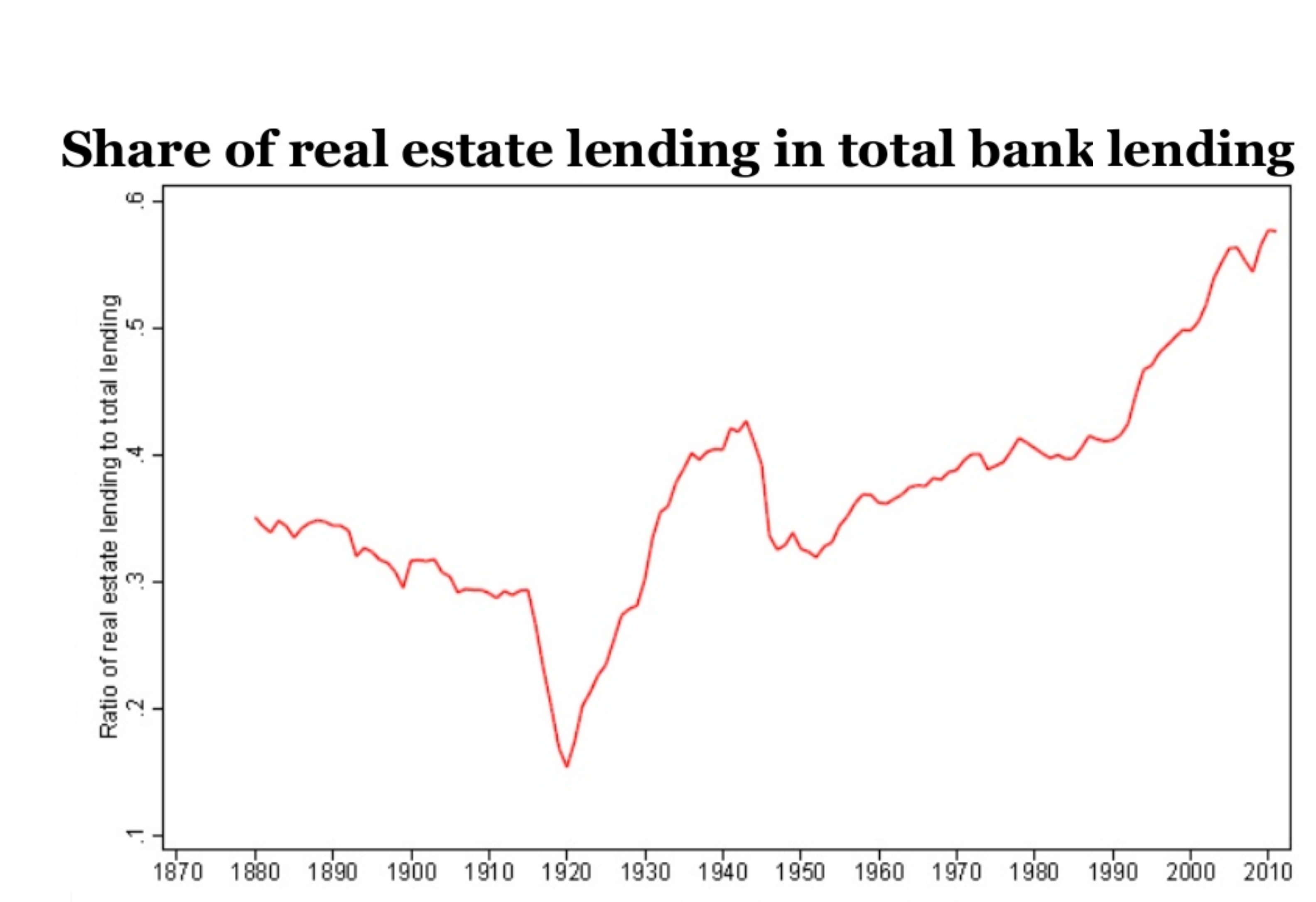
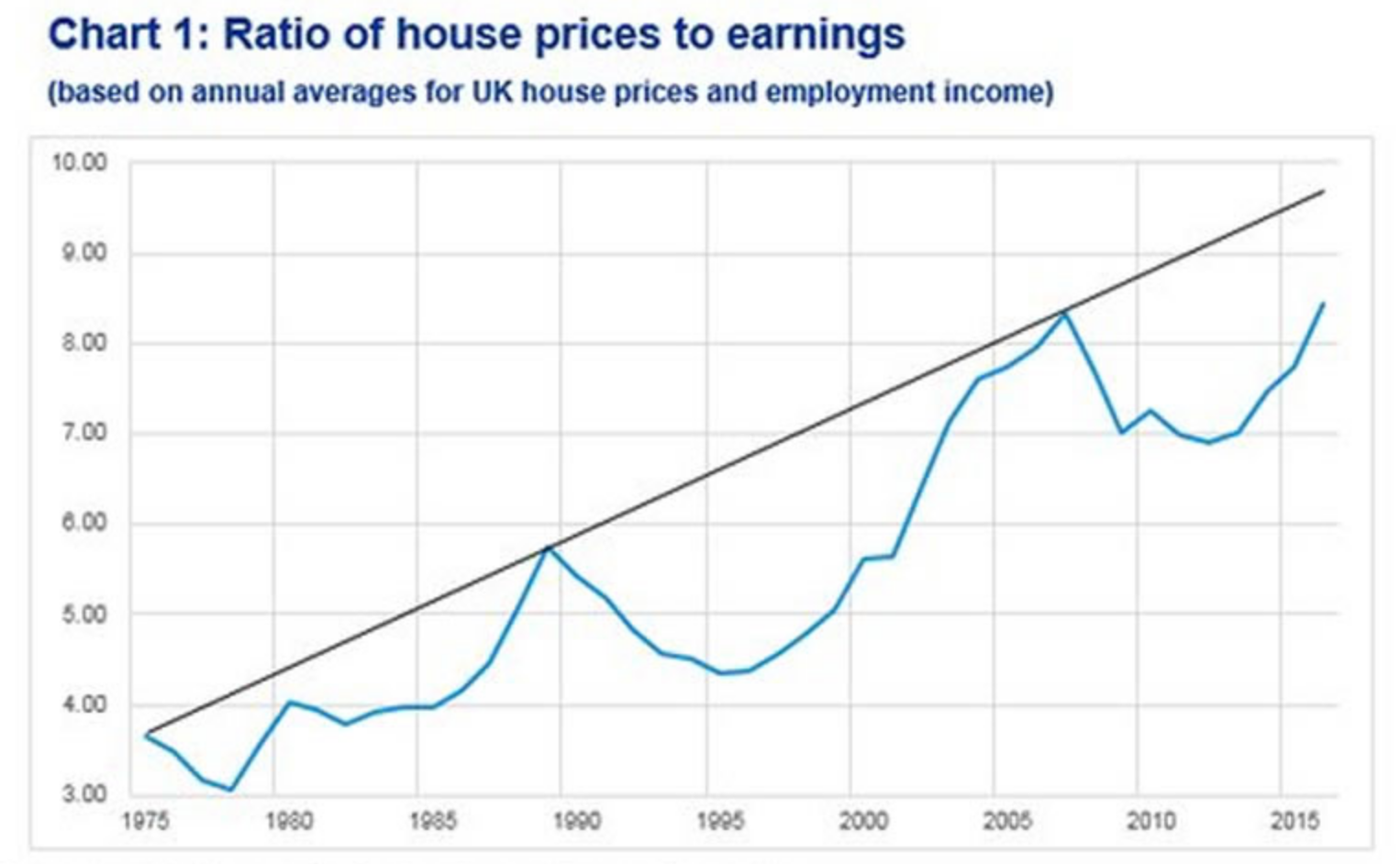
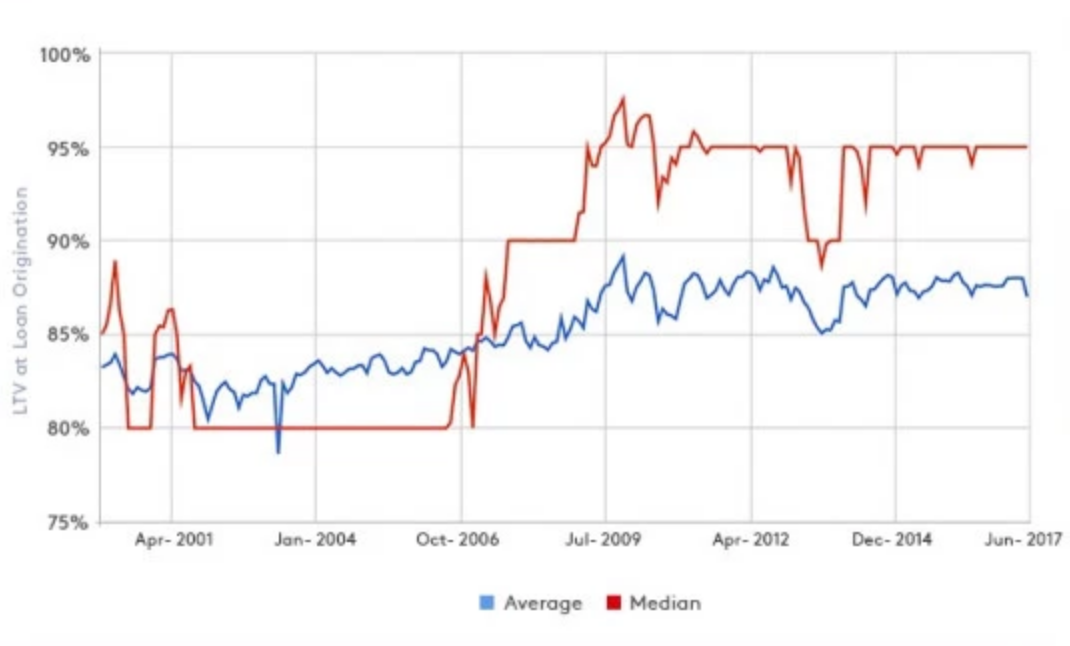
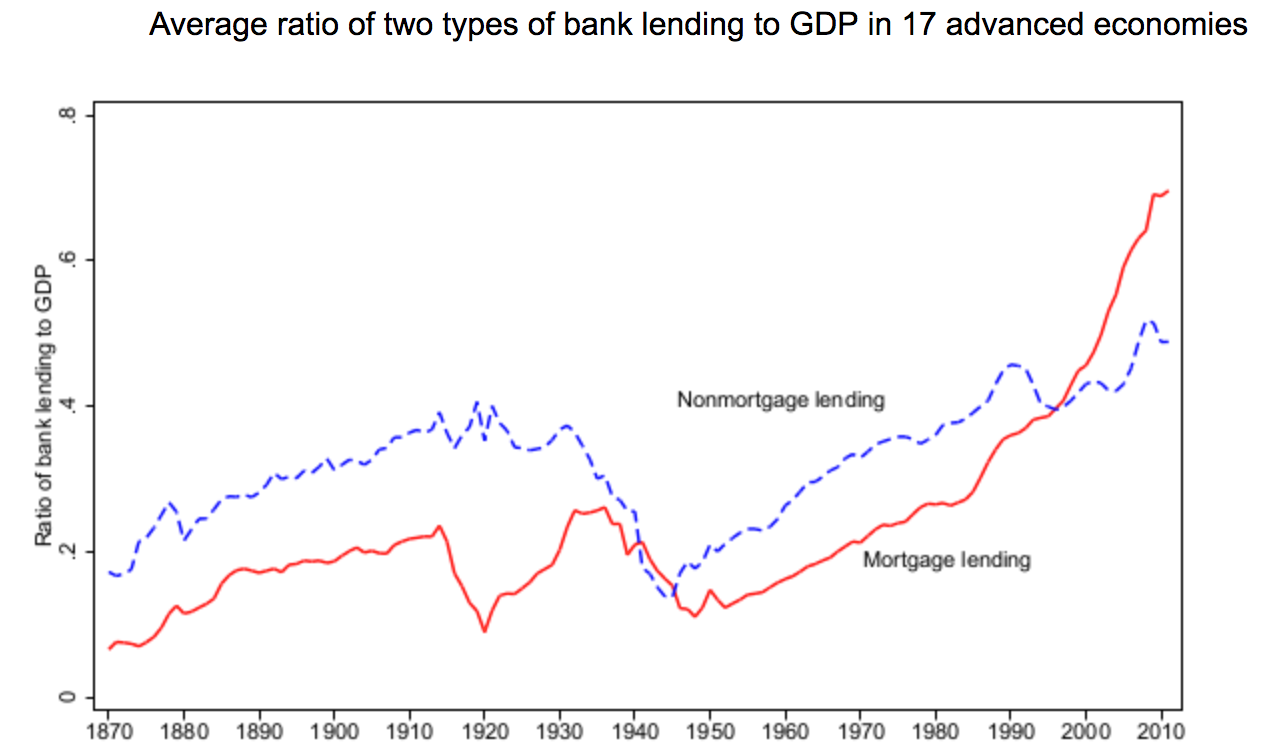
ARTIFICIALLY RESTRICTED SUPPLY
The explosion in real estate prices is often assumed to be due to land scarcity as a natural result of growing populations. That is false.
It is a result of artificially restricted supply.
Landlords have, collectively, created real estate shortages wherever they can, most successfully in large metropolitan areas. This has been achieved through a series of ordinances preventing the construction of new buildings in many areas or limiting land use through, for instance, height restrictions on buildings. Think of the London green belt, or the standardized height in Paris, which severely restrict the city perimeter or the number of floors of buildings to what it was in the 19th century in the name of “livability” or architectural uniformity.
The results of these measures have sometimes been astonishing. For instance, faced with height restrictions, London landowners have turned to the city’s depths: The town has seen a digging craze, with homeowners adding new basement levels to their mansions Independent. It may certainly be true that zoning regulations are needed to avoid chaotic development, but it is just as true that the rules have been used as a subterfuge by city councils to prevent new construction, pushing up housing prices in their borough to the satisfaction of, if not of the population at large, local homeowners, a demographic that happens to make up a majority of their electorates.
A good example of this is given by Luxembourg. Luxembourg has a density of slightly above 200 people per km2. It is a well-managed country with a multilingual and industrious population. Thanks to its ability to reinvent itself repeatedly around new industries, from ironworks to broadcasting, private banks and, today, fund administration, it continues to enjoy a booming economy. The country has a population of 600,000 that grows by close to 180,000 during the work day, with intra-day migrants coming from neighboring countries. The building area of Luxembourg city, which is surrounded by fields and forests, has for years been strictly fixed by zoning laws. But those city limits are somewhat arbitrary, and have not kept up with the rapidly expanding economy. A third of the country’s territory is forest, some of which could easily be cleared to extend the city’s limits. The refusal to do so has led real estate prices to reach close to 10,000 euros per square meter, with an average price over 8,000 euro Luxembourg. Think of this for a minute, and compare these prices with Tokyo, the world’s largest metropolis, where the average price is just over 10,000 usd per square meter Numbeo. Incredibly, Luxembourg real estate prices are similar. This has been great for the landholding inhabitants of Luxembourg city, who have seen an unprecedented appreciation in real estate values. But this paper gain is just the materialization of a larger loss for the economy as a whole through the capture of a monopolistic rent situation by a few to the detriment of the many, and to that of their country.
DISTORTED, UNUSED, UNTAXED
Beyond limits to supply, other distortionary political decisions have pushed values up further.
The uncertainty created by excessive money has inflated asset prices generally, and real estate, seen as a safe investment, has been an especially attractive place to park money.
Then there are changes to the taxation of real estate. Over the last several decades, in many places, a system of taxing real estate based on its value has been replaced by some form of fixed taxation. Proposition 13 in California, enacted in 1978, fixed the value in time, so that old acquirers pay a tax assessed on only a fraction of the current market value California. In the U.K., taxation of real estate through “council bands”25, has largely morphed into a poll tax26 as the fixed amount claimed was not changed in line with the real estate price increase. In Belgium the process of real estate tax indexation,27 which recalibrates property taxes to current real estate values, was last performed decades ago. If, in all these places, a common percentage corresponding to the original tax had been consistently applied to the market value of real estate, speculation would have largely been kept at bay.
Further, most countries encourage through a variety of tools real estate acquisitions. These measures include deductibility of interest payment, or say non-taxation of the occupation “income.” Renters typically do not benefit from the same support. For instance, renters do not get to deduct rent from their income taxes. We thus have a system that inherently inflates real estate price by tilting market equilibrium towards acquiring property.
CONSEQUENCES
Those ballooning costs have profound economic, social and political consequences.
Real estate in metropolitan areas has become – aided by clever marketing, zoning regulations and tax policies – a means to hoard value rather than an economic product.
As a result, property in many city centers is no longer occupied or rented. Dwellings sit vacant, while others are rented at a low yield, explaining the curious fact that rents for high-value properties are relatively cheap. In some cases, we end up with whole neighborhoods, allegedly the most exclusive, like Mayfair in London, that are empty at night. This comes at a high cost to cities, whose best and central neighborhoods should be economic centers full of activity and not empty, overvalued dwellings. Commuters are forced to pay more and live further away, while investors fight to buy – and empty out – the best-located properties.
Lower and unused supply leads to higher rent, but higher rent is not inevitable and is a fairly recent phenomenon. In France, the percentage of income going to rent has doubled from 1978 to 2006 ANIL. Yet countries with higher population density, such as Germany, manage to have significantly cheaper housing. The rent for a one-bedroom apartment in Paris is over $1700 per month versus $1100 in Munich CNBC. The average renting price of a square meter in Germany in 2013 was 7.6 euros (9.4 for new rental) against 10.6 euros (11.2 for new rental) in France. In Germany, on average, rent is about a quarter of the wage of the renter, compared to closer to 30% in France, and close to 40% in the UK National Housing Federation.
The social consequences of the housing squeeze are severe. Despite nominal increases in wages, given that real estate prices have been going through the roof, the net increase in wage has been minimal. In countries where the average income has been stagnant for decades, like the U.S., disposable income has gone down when accounting for the rising cost of housing.
The seemingly unending rise in rent affects two populations in particular. The first is the poor. Rent is a relatively inelastic cost, so it consumes a larger portion of the budget of lower income households. Even in the U.S., where the cost of real estate and rent is relatively lower than in other Western countries, lower income families spend close to 50% of their income on rent. Similarly in France, the lowest income decile spent over 40% of their income, four times as much as the top decile, on housing INSEE.
This matters particularly in the context of national competitiveness. Consider for instance that both France and Germany have a minimum wage of approximately 1500 euros per month. Rent is a higher proportion of income for the lowest earner, the highest expense of a minimum wage earner. After accounting for rent, the German minimum wage earner is significantly better off. France, like other Single Market countries, simply cannot afford a minimum wage higher than that of their formidable German competitor. The less well-off are left squeezed between the local landlord’s rent increases and the threat of deindustrialization.
Rising rents also hit the young especially hard. It has always been true that younger people moving into cities were facing high rent and lower income as they began their careers. But this squeeze has reached unprecedented levels. Young people will end up spending on average close to half of their income on rent for their first ten years of work USA Today.
The situation has gotten so bad in the U.S. that lower-income young people now regularly devote 60% to 70% of income to rent. We have reached, as any renter will attest, an absurd level of price.
The result has been a generation that lives with their parents well into their 30s and that has given up the dream of renting alone, let alone buying a home.28 This has had negative effects on childbirth and the fertility ratio. As children stay with their parents later, they have to postpone couple formation and having children. The few young people that do have the chance to “climb” on the property ladder often seem to be benefiting from their parents’ help. While this is totally understandable from a family standpoint, on a societal level, it perpetuates the haves and the have nots, as only children from wealthy parents can benefit from this support. The perpetuation of wealth and real estate ownership through no specific achievements of the younger beneficiary generation contribute to the resentments that are fueling the rise of populism.
The contrast could not be starker between the many losers and the few winners.
This is the direct result of an abdication by the government of its role in regulating a critical market to avoid excesses. Regulations could and should be changed to address the social crisis caused by present real estate prices. Supply could be liberated. Credit limits in real estate lending could be imposed on banks. Taxation could be made fair between renter and buyer, based on market value and deterring empty hoarding. One of the reasons this is not done might be the fear of a correction. But today’s prices are bound for a correction under any normal economic conditions anyways.
Already, housing costs are becoming a political motivator, with real estate ownership becoming a major source of concern for the discontented. It has been shown, for instance, that there was a strong correlation between real estate prices and voting patterns in the Brexit referendum, revealing the structural economic factors that lie just below the surface of rising political dissent Ansell.
